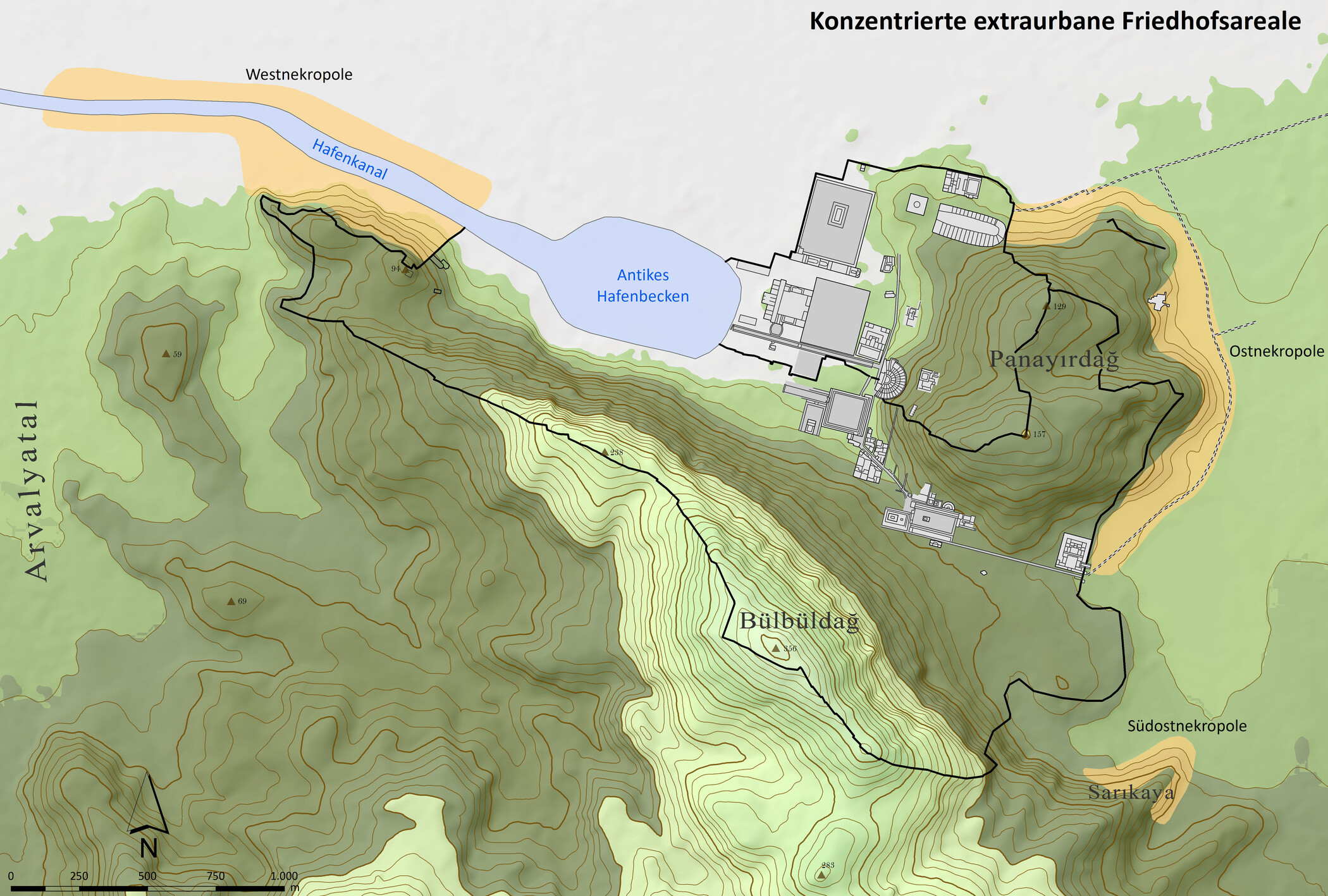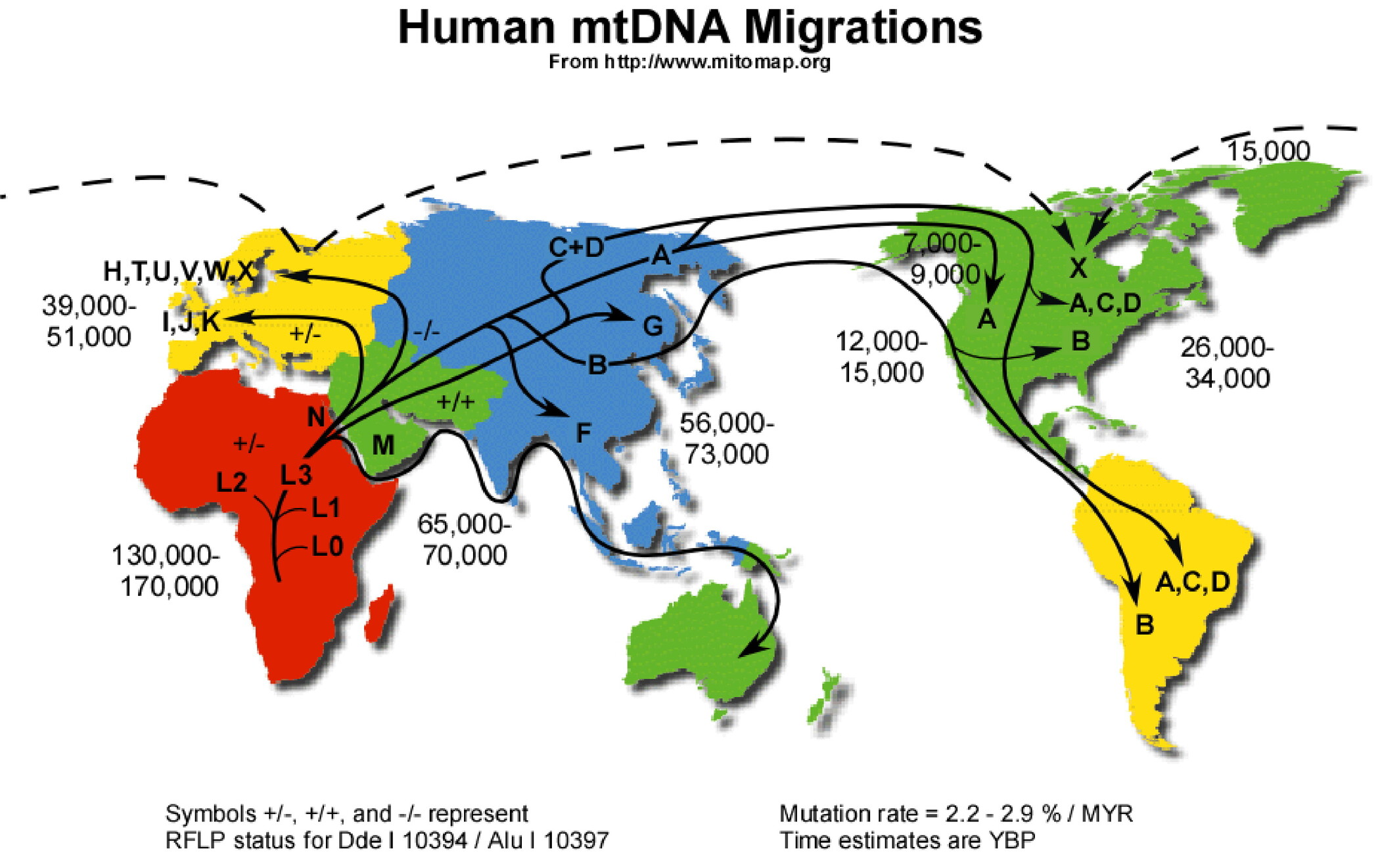»Death in Antiquity«
Systematic research in the necropoleis has been taking place in Ephesos since 2008. This interdisciplinary field project is intended to provide insight into the broad thematic field of ›Death in Antiquity‹ by taking all material remains into consideration.
The aim of this research is to gain a general understanding of the Ephesian mortuary landscape and to place the Ephesian findings into a broader chronological and topographical context. In addition to stratigraphical excavations, the project encompasses intensive and extensive surveys as well as the contextual analysis of finds, including related disciplines such as anthropology, archaeozoology, geoarchaeology, and geophysics. The research is taking place in close collaboration with the research group »Environment and Human Impact in Historical Societies«.
The necropoleis of Ephesos
At its core the project is focused on a virtually unexplored area of Ephesos and a research field that has considerable potential for further development particularly in Asia Minor. Since a complete excavation of the Ephesian necropoleis is impossible, the stratigraphical discovery is focused on larger connected areas that offer a representative sample of the chronology, structure, and appearance of the individual tombs and burials. The anthropological analyses are centered on questions regarding sex, age, family associations, dietary habits, and cause of death of the buried. In connection with the assessment of the furnishings, size, and structure of the burials, the funerary objects as well as the evaluation of possible epigraphic finds, the study is expected to lead to a greater understanding of the funerary customs and social structure of the Ephesians. Through the contextual analysis of the ceramic find material and the small finds from the necropoleis basic questions about the phases of use and secondary use will be clarified. The aim of the geoarchaeological research is to provide explanation models for the complex sedimentation processes as well as the varying sea and groundwater levels over the course of the centuries that necessitated the construction of the harbor channel – the prerequisite for the emergence of the West Necropolis (also: Harbor Necropolis).
Thematic priorities
The main topic »Death in Antiquity« will be documented in all its facets and without chronological restrictions. The following aspects are central to the research interests: size of the necropoleis, history of use of the necropoleis, typology of the burial architecture, appearance and quantity of non-burial related architecture in the necropoleis, development of the burial house types, structural organization of the necropoleis, diachronic differentiation of the phenomenon ›intra- and extraurban burials‹, staging of death, ritual conduct, population and social structure as well as health, life expectancy, cause of death, family cohesion, and origin.
Supraregional context
The study of the necropoleis is clearly focused on Ephesos but from a topographic aspect goes beyond this city. The structural organization of the Ephesian funerary areas is contrasted with other necropoleis in the eastern provinces. In addition this appraisal of funerary contexts is compared with contexts from the western provinces as well as with contexts from Rome in theoretical studies.
Isotope and DNA analyses on the Ephesian population
As part of the necropolis research, strontium isotopes and DNA analyses have been taking place in Ephesos since 2011 in order to more closely examine the Ephesian population or single individuals in regards to their origin and descent.
DNA-analyses of human remains have led to significant new discoveries over the course of the last three decades: on the one hand we have gained insights into population structures, migration behavior, and colonization of uninhabited areas and on the other it has provided snapshots of daily life situations, such as the spread of diseases and social relations.
Methods
Within this context many individuals of different time periods and varying topographical association have been sampled in Ephesos. The maternal lineages have been determined through the analysis of the mitochondrial DNA and illustrate a highly complex picture of the Ephesian population. These analyses are supplemented by selective DNA-analyses of the nucleus.
The DNA-analyses are further complemented by analyses of the stable strontium isotopes. They provide information on the geographical origin of an individual. The values of these isotopes are unique markers in the geology of a landscape and have largely remained unchanged since antiquity. When samples are taken from the teeth of a human, ideally the location can be determined where an individual grew up or where he spent the rest of his life.
In summer 2016 modern plant samples as well as snail shells were collected in Ephesos and its surroundings in order to obtain reference values for the strontium isotopes and the actual absorption through food consumption. The isotope analyses are being carried out in cooperation with M. Richards and M. Wong (Simon Fraser University, Canada). The research is also taking place in close collaboration with the bioarchaeologists at the OeAI.
Preliminary results
Preliminary analyses of the human remains from the west necropolis demonstrate a highly complex distribution of maternal lineages within the Ephesian population. European lineages as well as those of Asian and/or African origin have been verified. This characterizes Roman Ephesos as a melting pot of people from near and far, as it were from ›all corners of the world‹.
Principal Investigator
Cooperations
- ZAMG
- Hans Taeuber (Institute for Ancient History and Classical Studies, Papyrology and Epigraphy, University of Vienna)
- Norbert Zimmermann (DAI, Rome Department)
- Michael Richards and Megan Wong (Department of Archaeology, Simon Fraser University)
- Ron Pinhasi (University of Vienna, Department of Evolutionary Anthropology)
- Gro Bjørnstad (Division of Forensic Sciences, Norwegian Institute of Public Health Oslo)
- Kristina Scheelen-Nováček and Jan Nováček (℅ Göttingen University and Thüringisches Landesamt für Archäologische Denkmalpflege in Weimar)
- Helmut Brückner (Institute of Geography, University of Cologne)
Duration
since 2008
Funding
- OeAW-OeAI
- FWF-Projekt P22083




